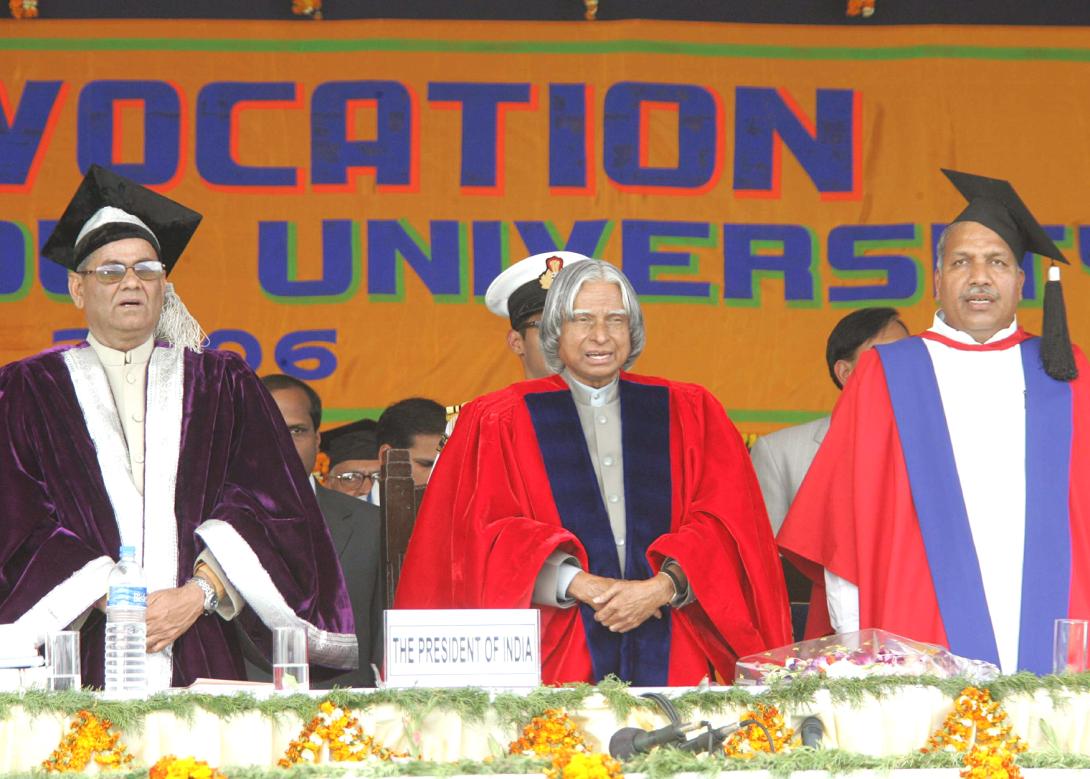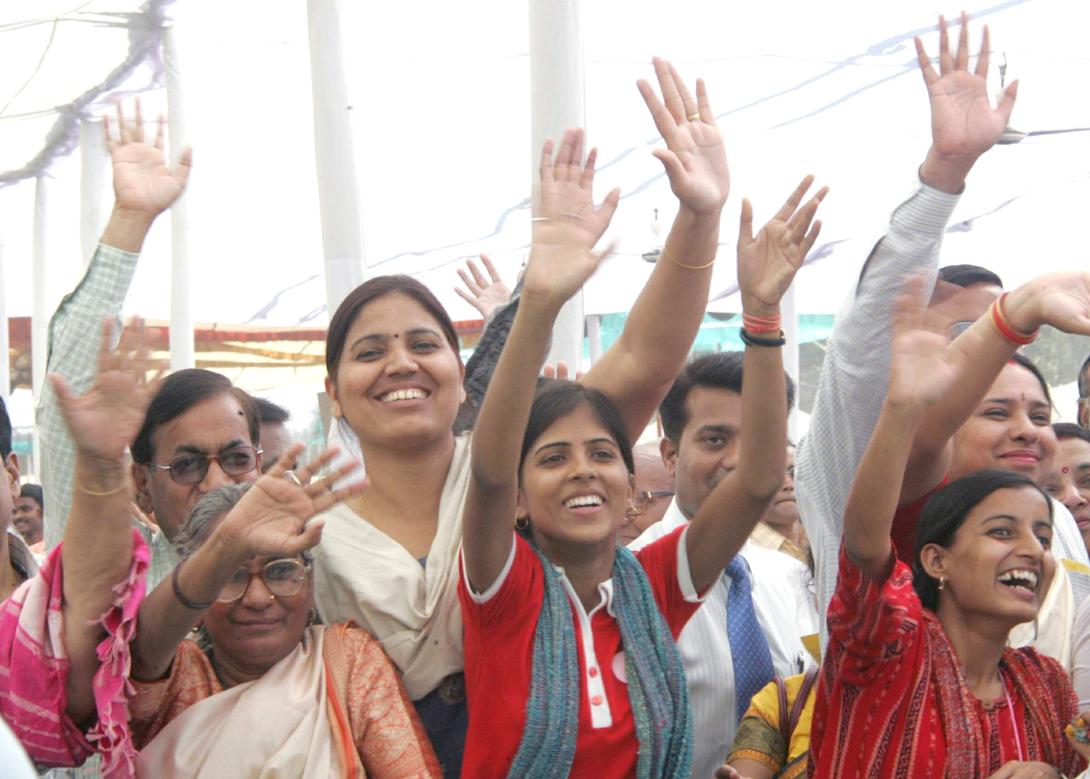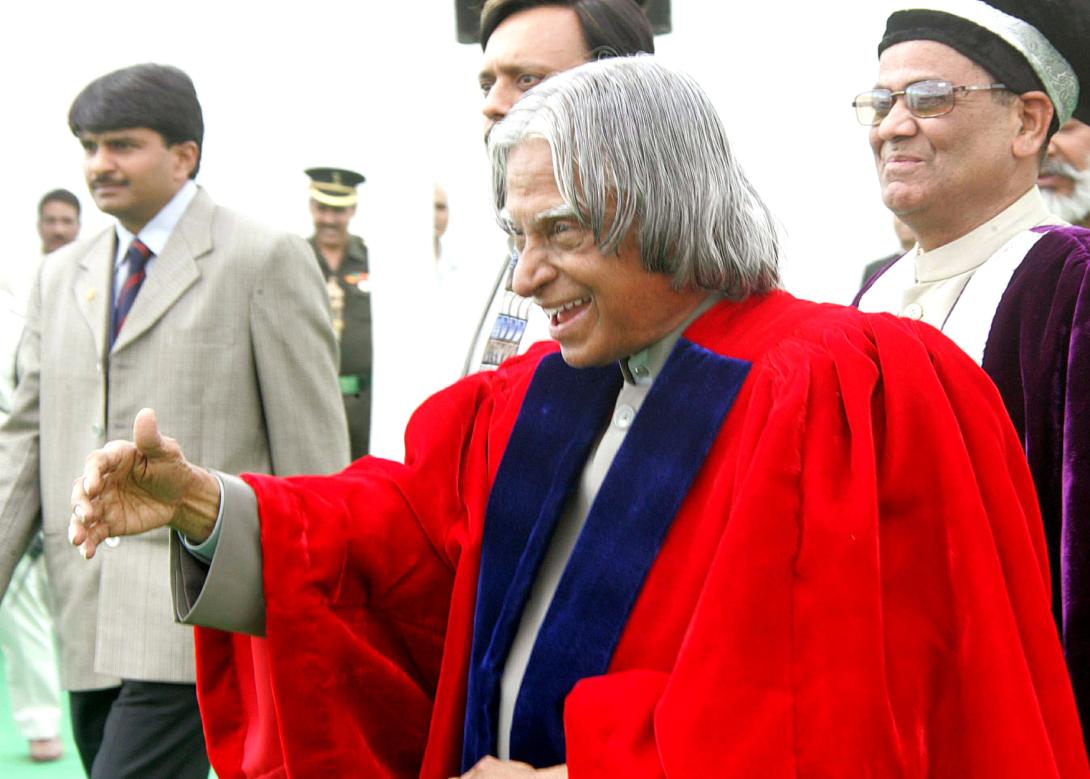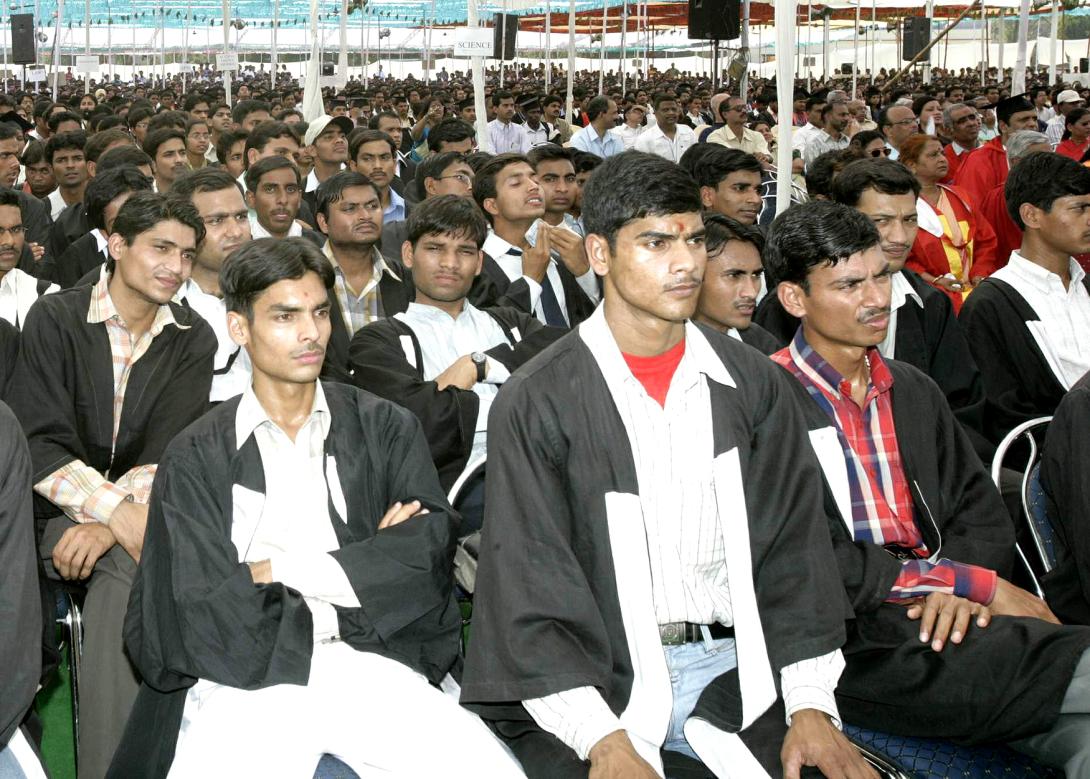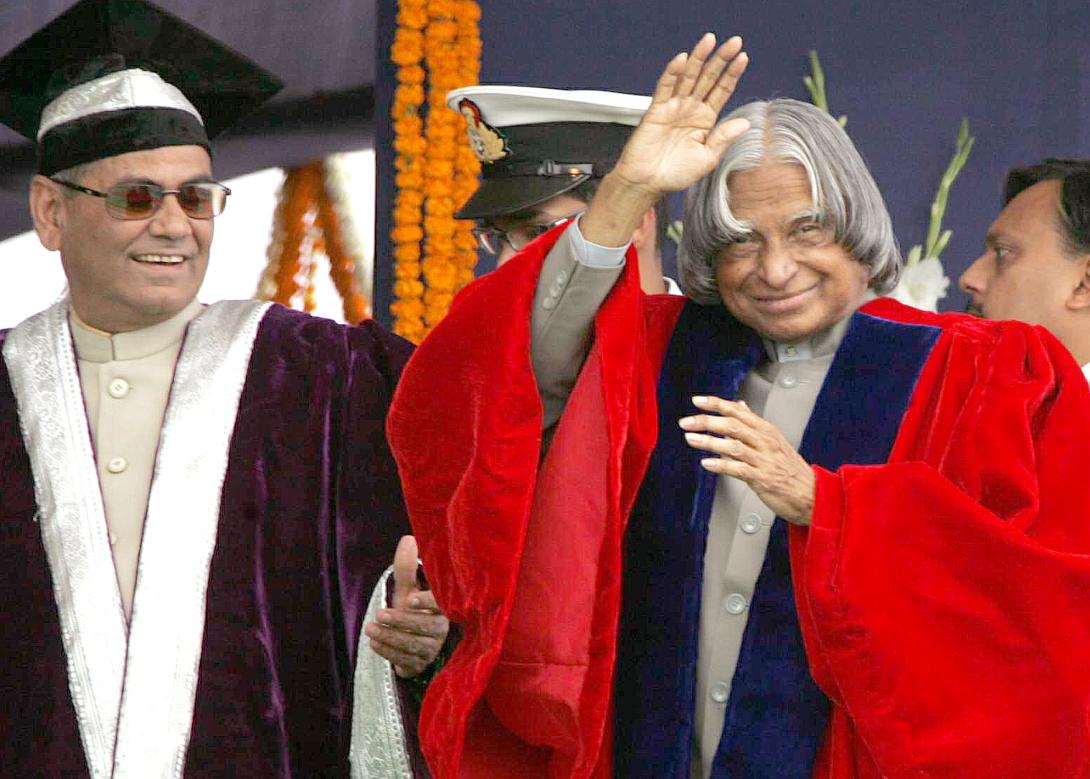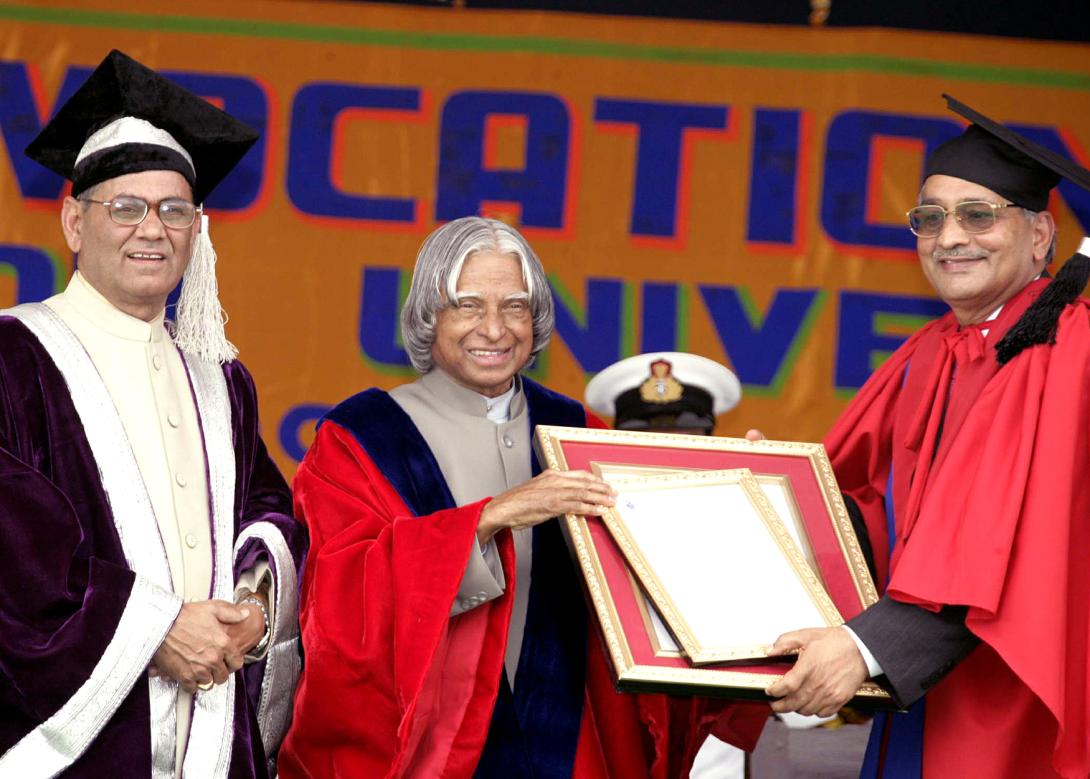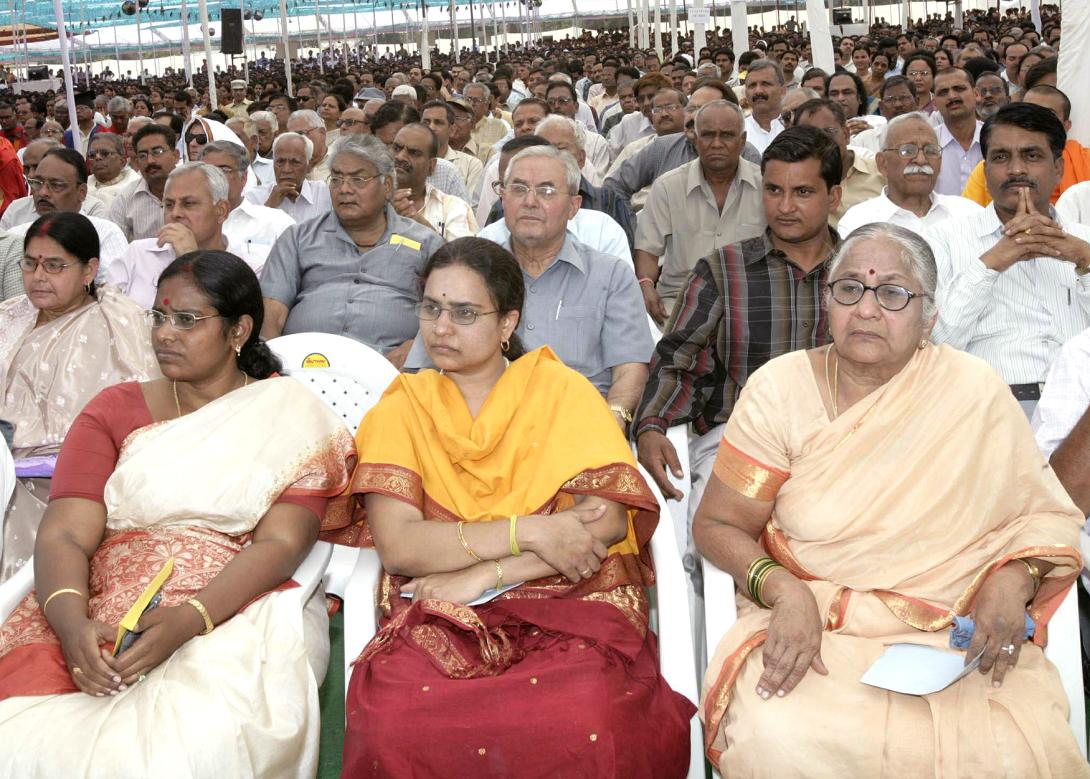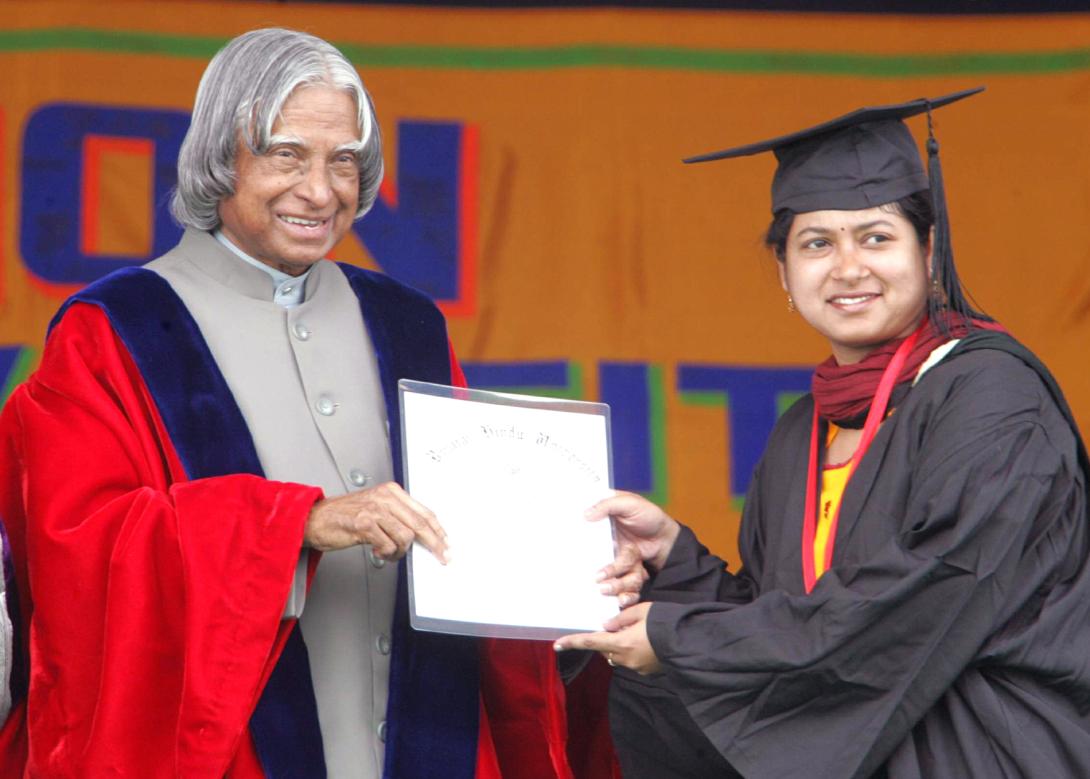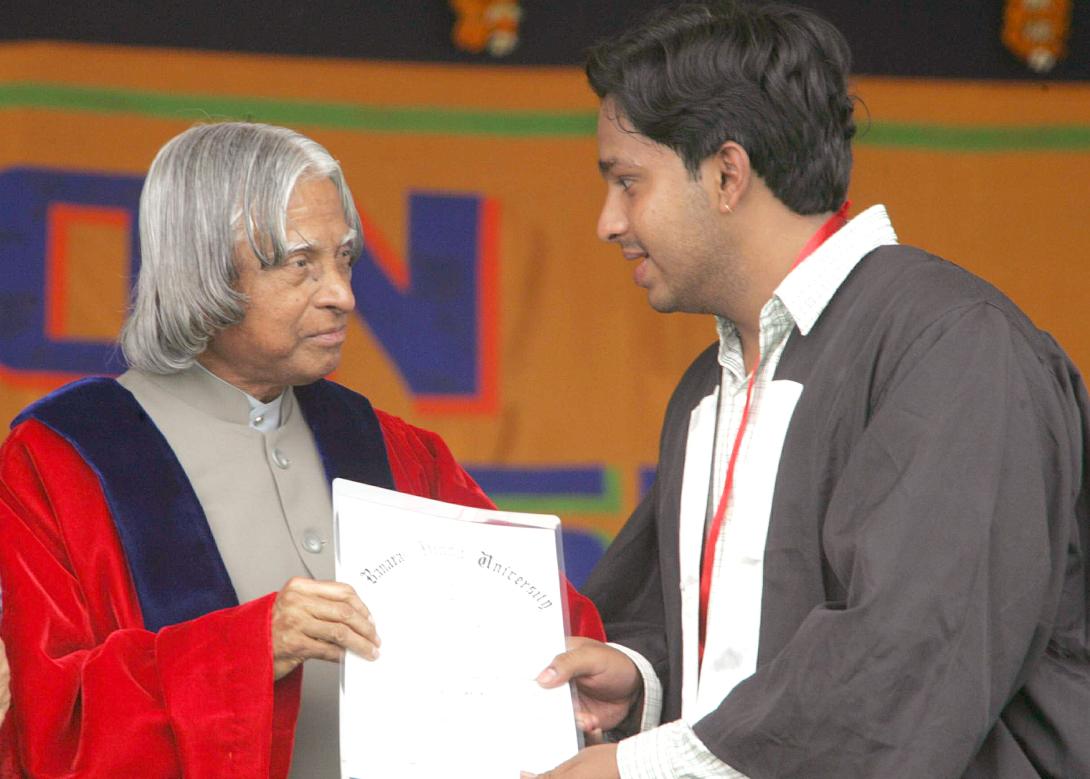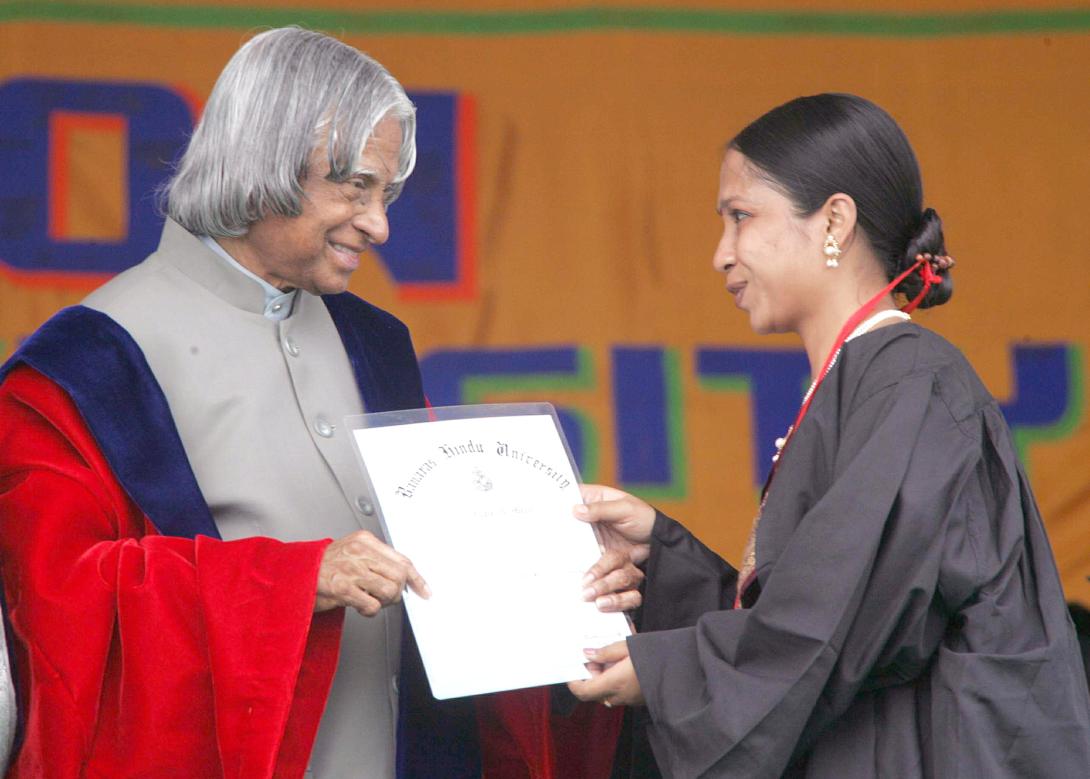Convocation Address Banaras Hindu University, Varanasi
Varanasi : 03-03-2006
Evolution of Enlightened Citizenship
I am delighted to participate in the Convocation of Banaras Hindu University in this holy city. My greetings to the Vice Chancellor, Faculty members, students, staff and distinguished invitees. I congratulate the students for their academic performance and staff for shaping the young minds.
When I am with you, I would like to recall my last visit to the Banaras Hindu University in the year 1991 when I was the Director, DRDL, Hyderabad, to deliver the Convocation address at the Institute of Technology of BHU. During the function the Chancellor of the University, the then Maharaja of Banaras, His Excellency Shri Vibhuthi Narayan Singh introduced me to the audience stating that I have come to the land of Ganges at Kasi from Rameswaram Agniteertam. There is a beautiful spiritual connectivity of Kasi-Rameswaram. Again, I am very happy to be with you today.
I am inspired to be in the land of Pandit Madan Mohan Malaviya a great educationist and freedom fighter, who founded this institution with a great vision. As you all are aware, this institution was conceived and established in 1916 when the British ruled us and we can imagine the challenges faced by Pandit Madan Mohan Malaviya in creating this institution. He is a man of indomitable spirit that is how that this great institution has become a shining star in the galaxies of the universities. This is a unique university for multi-disciplinary study; it has agriculture with vast farms, medical college with big hospital, having the disciplines of science, humanities, engineering including mining with many faculties and departments. Since I am in the University environment, I would like to discuss with you about the role of university in capacity building among our youth.
Capacity Building
A good educational model is the need of the hour to ensure that the students grow to contribute towards the development of the nation. Can we sow the seeds of capacity building among the students? There will be continuous innovation during the learning process. To realize this, special capacities are required to be built in education system for nurturing the students. The capacities which are required to be built are research and enquiry, creativity and innovation, use of high technology, entrepreneurial and moral leadership.
Research and enquiry: The 21st century is about the management of all the knowledge and information we have generated and the value addition we bring to it. We must give our students the skills with which they find a way through the sea of knowledge that we have created and continue with life long learning. Today, we have the ability, through technology, to really and truly teach ourselves to become the life-long learners. This is required for sustained economic development
Creativity and innovation: The management of knowledge in the 21st century is beyond the capacity of a single individual. The amount of information that we have around is overwhelming. The management of knowledge therefore must move out of the realm of the individual and shift into the realm of the networked groups. The students must learn how to manage knowledge collectively. When the information is networked the power and utility of the information grows as square as stated by Metcalfe's law. Information that is static does not grow. In the new digital economy information that is circulated creates innovation and contributes to national wealth.
Capacity to use high technology: Every student in our college should learn to know how to use the latest technologies for aiding his or her learning process. Universities should equip themselves with adequate computing equipment, laboratory equipments, and Internet facilities and provide an environment for the students to enhance their learning ability. In the midst of all the technological innovations and revolutions we cannot think that the role of the teachers will be diminished. In fact the teacher will become even more important and the whole world of education will become teacher assisted and would help in ?tele-porting? the best teacher to every nook and corner of the country and propagate the knowledge.
Entrepreneurship: The aptitude for entrepreneurship should be cultivated right from the beginning and in the university environment. We must teach our students to take calculated risks for the sake of larger gain, but within the ethos of good business. They should also cultivate a disposition to do things right. This capacity will enable them to take up challenging tasks later.
Moral leadership: Moral leadership involves two aspects. First it requires the ability to have compelling and powerful dreams or visions of human betterment. Moral leadership requires a disposition to do the right thing and influence others also to do right things.
In sum, inquiry, creativity, technology, entrepreneurial and moral leadership are the five capacities required to be built through the education process. If we develop in all our students these five capacities, we will produce ?Autonomous Learner? a self-directed, self controlled, lifelong learner who will have the capacity to both, respect authority and at the same time is capable of questioning authority, in an appropriate manner. These are the leaders who would work together as a ?Self-organizing Network? and transform any State as a prosperous State. The most important part of the education is to imbibe the confidence among the students is the spirit of ?we can do it?. These capacities will enable the students to meet the challenges of our national mission of transforming the nation into a developed country by 2020. The education system in the university must aim to generate large number of entrepreneurs apart from those students who have an aptitude towards research.
Adding Value to Education through Entrepreneurship
There has been substantial growth in our higher educational system and we are generating over three million graduates every year. However, our employment generation system is not in a position to absorb all these youth leading to increase in educated unemployed, year after year. This situation will lead to instability in the social structure. We need higher education with employment potential that will create employment opportunities. A multi-pronged strategy is needed to make education more attractive and simultaneously create employment potential ? how do we do that?
Firstly, the educational system should inculcate by adding syllabus of entrepreneurship and prepare the students right from the college education to get oriented towards setting up of the enterprise which will provide them creativity, freedom and ability to generate wealth. Secondly, the banking system should provide venture capital right from every village level to the prospective entrepreneurs for undertaking new enterprises. Banks have to be proactive to support the innovative products for enabling wealth generation by young entrepreneurs. Thirdly, there is a need to identify marketable products and enhancement of purchasing power among the people. This can come through the implementation of mega programmes such as Providing Urban Amenities in Rural Areas (PURA), Waste Land Development, Interlinking of Rivers, Infrastructural missions, Textile mission, Health care mission, Bamboo mission, Power missions, Village Knowledge Centres, fly ash mission, tourism leading to the creation of employment for 76 million people. The Universities should become a facilitator for creating this entrepreneurship scheme through the support of the banking system and the marketing system. This will enhance the value to the education and create the motivation for the students. Now I would like to discuss the importance of research in the academic environment.
Research-Teaching-Research
Any University is judged by the level and extent of the research work it accomplishes. This sets in a regenerative cycle of excellence. Experience of research leads to quality teaching and quality teaching imparted to the young in turn enriches the research. Research brings transformation and development and also enhances the quality of education.
Technology is the non-linear tool available to humanity, which can affect fundamental changes in the ground rules of economic competitiveness. Science is linked to technology through applications. Technology is linked to economy and environment through manufacture of knowledge products. Economy and environment are linked to technology, which promotes prosperity to the society. Now I would like to discuss certain key areas of research in convergence of technology which will be of interest to the passing out graduates of BHU.
Convergence of Technologies
The information technology and communication technology have already converged leading to Information and Communication Technology (ICT). Information Technology combined with bio-technology has led to bio-informatics. Now, Nano-technology is knocking at our doors. It is the field of the future that will replace microelectronics and many fields with tremendous application potential in the areas of medicine, electronics and material science. When Nano technology and ICT meet, integrated silicon electronics, photonics are born and it can be said that material convergence will happen. With material convergence and biotechnology linked, a new science called Intelligent Bioscience will be born which would lead to a disease free, happy and more intelligent human habitat with longevity and high human capabilities. Convergence of bio-nano-info technologies can lead to the development of nano robots. Nano robots when they are injected into a patient, my expert friends say, it will diagnose and deliver the treatment exclusively in the affected area and then the nano-robot gets digested as it is a DNA based product.
Convergence of ICT, aerospace and Nano technologies will emerge and revolutionize the aerospace industry. This technological convergence will enable building of cost effective low weight, high payload, and highly reliable aerospace systems, which can be used for inter-planetary transportation.
Bioinformatics: The convergence of bioscience and IT into Bioinformatics has given the thrust to researchers for genomics-based drug discovery and development. Pressure is mounting over the pharmaceutical companies to reduce or at least control costs, and have a growing need for new informatics tools to help manage the influx of data from genomics, and turn that data into tomorrow's drugs.
Bioinformatics data play a vital role and emerging as a business model for the medical and pharmaceutical sector. Key areas such as gene prediction, data mining, protein structure modeling and prediction, protein folding and stability, macromolecular assembly and modeling of complex biological systems are thriving and IT has major role to play in these areas in bringing the tools to manage the high throughput experiments and the data they generate, and sharing and integrating all the data in a meaningful way resulting into the detailed models of complex systems, particularly biological pathways.
BioSuite: I launched the Bio-Suite at Hyderabad on 14th July 2004, which is an important software package that caters to all aspects of computational biology from genomics to structure-based drug design. It incorporates the latest publicly known algorithms, as chosen by a panel of academic partners, and has been coded entirely by the Tata Consultancy Services (TCS) team, using the software engineering practices. It can be used by academic and R&D institutions, small and medium and large biotechnology companies. This bio-suite was developed by TCS in collaboration with Council for Scientific and Industrial Research (CSIR) and academic institutions including the IISc, for cost effective drug development in India.
Gene Chip: In 2004, I visited Dr. Cherian?s Medical Centre at Chennai. It is known as, International Centre for Biomedical Sciences and Technology (Research & Applications). There I interacted with Dr. Emmanuel, who is working in the area of Gene Chip. They have developed a Gene Chip which can be used for finding the existence of genetic diseases including coronary artery diseases or neuro defect in the baby during a certain stage of pregnancy itself. The chip could also be modified to suggest to the patient?s system to develop those chemicals, which in turn will help the patient recover from the present situation. The specialists assembled here may like to debate whether gene chip can be used for identifying the susceptibility of the baby to the allergic diseases in the advanced stage of pregnancy. Can medical bio-informatics help in finding a treatment regime for the mother, which may give immunity to the child from the allergic disease?
It is reported that gene differences between humans and most animals are very nominal. More than 90% of our DNA is similar. This property is a boon to researchers since animal models can be subsequently used for curing human diseases based on trial data. Medical researchers are progressing further in this area for finding the application of Gene Chip as a diagnostic tool and as a treatment regime for allergic diseases and asthma.
Nano Technology: When I think of Nanoscience and Nanotechnology, I would like to discuss about three scientists who have laid the foundation on nanoscience and nanotechnology. Mr. Richard Feynman, who described the concept of 'building machines" atom by atom in his talk at Caltech titled "There is plenty of room at the bottom". Mr. Eric Drexler, who wrote the book titled 'Nano Systems, Molecular machinery, manufacturing and computation". Prof CNR Rao, who is an alumni of BHU has pioneered and fostered the nano-science research in India. Molecular nano technology has enormous potential for future aerospace systems and health areas. Research has shown that newly discovered class of molecules, leading to the development of carbon nano tubes that they have multiple applications in the system developed in the areas of electronics particularly nano-electronics and power systems. Carbon nano tubes are normal form of carbon with remarkable electrical and mechanical properties. It is hoped that such materials could revolutionize electronic design and open the space frontier by radically lowering the cost of launch to orbit. Carbon Nano tubes reinforced with polymer matrix will result in composites which are super strong, light weight, small and intelligent structures in the field of material science. This has tremendous aerospace applications.
Molecular switches and circuits along with nano cell will pave the way for the next generation computers. Ultra dense computer memory coupled with excellent electrical performance will result in low power, low cost, nano size and yet faster assemblies.
The solar rays, when passed though presently available solar photovoltaic cells have an efficiency of less than 20%. I would like to discuss the latest research in the area of photo-voltaic cells using Carbon nano tubes which can give an efficiency of over 45%, nearly three times the efficiency which the present technology can offer.
The CNTs provide better electron ballistic transport property along its axis with high current density capacity on the surface of the solar cell without much loss. Higher electrical conductivity and mechanical strength of CNT could improve the quantum efficiency to the order of 35%. But, this is not sufficient. Recent research abroad has shown that the alignment of the CNT with the polymer composites substrate is the key issue and this aligned CNT based PV cells would give very high efficiency in photovoltaic conversion. In this process, the researchers could achieve the efficiency of about 50% at the laboratory scale. I am sure the researchers of BHU will definitely like to participate in the development of high efficiency Photovoltaic cell since your team has already developed carbon nanotube filters that efficiently remove micro-to-nano-scale contaminants from water and heavy hydrocarbons from petroleum. You are also working on the hydrogen fuel cells and hydrides in a focused way. This will definitely be an important contribution for the energy independence of the nation.
Energy Independence
Our energy requirement in the future will go up to four hundred thousand megawatt from the existing one lakh thirty thousand megawatt. Presently our energy requirement is mainly from coal (56%), hydroelectricity (25%), nuclear power (3%) and Renewable (5%). Solar energy segment contributes just 0.2% of our energy production. In the future we will be concentrating on coal 50%, hydro-electricity 20%, solar energy 14%, Nuclear energy 6%, Renewable energy 10%.
We have to work on the research area to increase the photovoltaic cell efficiency to 50% which I have talked to you earlier, enhance our research effort in generating nuclear power through thorium route and work towards bringing clean coal. In the transportation sector where we are now importing 75% of our oil requirement at a cost One lakh twenty thousand crore per year, we should enhance our bio-fuel generation capacity to 60 million tons and hydrogen packaged fuel. Also we should develop solar cars and solar thermal for chemical plant utilization. This combined stategy will lead us to total energy independence by the year 2030. BHU has got a great role to play in promoting energy independence through research and development work.
Conclusion: Evolution of Enlightened Society
When I am with the students and Faculty Members of BHU, created by a great visionary in education, I would like to put forth a thought for evolving a happy, prosperous and peaceful society in our planet, which I call as ?Enlightened Society?. How do we create such an enlightened society, which has three components (i) Education with value system (ii) Religion transforming into spirituality and (iii) Economic development for societal transformation? The purpose of education is indeed to generate an enlightened citizen.
In conclusion, I recall the great saying of the Saint Maharishi Pathanjali in Yoga Sutra at 500 BC:
"When you are inspired by some great purpose, some extraordinary project, all your thoughts break their bounds, your mind transcends limitations, your consciousness expands in every direction, and you find yourself in a new, great and wonderful world. Dormant forces, faculties and talents come alive, and you discover yourself to be a greater person by far than you ever dreamt yourself to be."
My congratulations to all the graduates who are passing out from this University today and my best wishes to all the members of Banaras Hindu University for success in their mission of providing quality education to the youth of the nation.
May God bless you.


